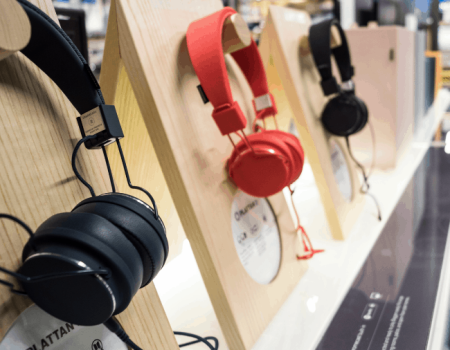The House and Garden Industry
DOES OMNICHANNEL LEAD TO GOOD FINANCIAL PERFORMANCE?
This year, Danske Bank has provided a financial analysis of the Omnichannel Index’s industries to get a deeper understanding of each industry’s terms.
Presented in collaboration with
Solid financial performance
Danske Bank has conducted an extensive analysis of the companies’ performance in Denmark, Sweden, and Norway based on public records.
Here, they have accounted for the revenue from 2016 to 2018 and the associated growth rate. The House and Garden industry is characterized by a strong revenue growth across the sector, while their EBIT-margin is somewhat unchanged and thus still positive.
The industry seems in general to be at a rather low maturity level in terms of omnichannel. However many focus on digital solutions to meet the customers’ expectation and thus improve their business potential.
According to the Danish E-commerce Association, FDIH, omnichannel is a must-have since 59% of customers prefer to see and touch products before they purchase them. Add-on services and new types of collaboration are some of the tools used to stay relevant.
Average score of the House and Garden industry
Average score of the best performing industry
The results across nations
DK: 60
SE: 55
NO: 50
DK: 50
SE: 48
NO: 43
DK: 52
SE: 36
NO: 32
DK: 28
SE: 33
NO: 27
DK: 28
SE: 21
NO: 25
The COVID-19 effect
Examining details and comparing financial data with each company’s omnichannel score shows varied outcomes. Half of the retailers either have a solid financial starting point or a good omnichannel score. But not many have both.
This can be a problem since the industry is currently standing at a crossroads. It must either upgrade its omnichannel efforts or it must welcome new competitors. Cause one thing is for sure.
Customers within this industry are ready to shop online despite the nature of some of the products in this industry.
During the COVID-19 shutdown, this is one of the five industries where most purchases took place. The sales increased by 17% in Denmark and, according to FDIH, 19% of customers expect to increase their online shopping after the crisis.
Learn from B2B
The low omnichannel level is not due to the type product or that customers prefer to buy these products in-store. They do not.
From a B2B point of view, the house and garden industry is one of the most mature industries from an omnichannel perspective. And customers, who are used to shopping online for B2B purposes, are also shopping more frequently online as private B2C customers, according to FDIH.
But in B2C, it is one of the lowest performing industries with a score of 39 versus the total average of 52.
This leaves the industry with a huge potential. If they do not step up their game soon, other companies and international retailers will take over.
Omnichannel benefits the profits
The industry could benefit from stronger omnichannel efforts, since the customers are hungry for omnichannel features.
59% of house and garden customers prefer to see and touch the product before they buy it, but they are still researching online before buying the product, according to FDIH.
By supporting the customers’ journey from online to in-store, there is a high likelihood of increased sales.





